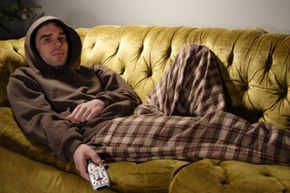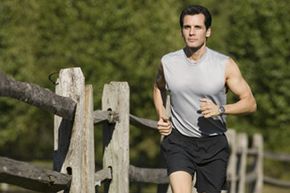Let's say you've been doing a lot of sitting on the couch, and you're beginning to feel a little lumpy. The most exercise you've had is walking from the sofa to the fridge and clicking through television channels. Eventually, watching athletes at the top of their game on the sports networks inspires you to get in shape, so you lace up your shoes and go for a run. Minutes later, you have pains in your side, can't catch your breath and can barely make it around the block.
You could quit and go back to life as a couch potato, or you could follow the Couch to 5K Running Plan. The nine-week program enables you to transform your sedentary lifestyle into an active one where you can run for 30 minutes or 5 kilometers (3.1 miles). The plan's structure prevents new runners from giving up and at the same time challenges them to continue moving forward.
Advertisement
Josh Clark, a self-proclaimed, "reasonably fit 20-year-old," founded the Couch to 5K (C25K) Running Plan in 1996. Although he hated running at the time, he knew he would benefit if he could just get through the initial discomfort. Clark's strategy in developing the C25K was to make it as painless and user-friendly as possible in order to engage the new runner immediately. Best of all, anyone can use the C25K plan anywhere. The plan's manageable expectations offer early success, which serves as motivation to stick with it. When runners have mastered the nine-week program, many are content to stick with the 5K, while others move on to bigger challenges [source: Clark, No Pain].
No matter which path C25K graduates choose, after two months they can realize the mental and physical health benefits of running. Running not only burns more calories than other forms of exercise but also helps lower the risk of early death due to diabetes, some cancers and cardiovascular disease. Additionally, running gives your mental health a boost, as exercise releases endorphins, the hormones that make you feel good [source: McDowell].
So is it possible to go from spud to stud in just two months? Keep reading to learn how the C25K plan works.
Advertisement

